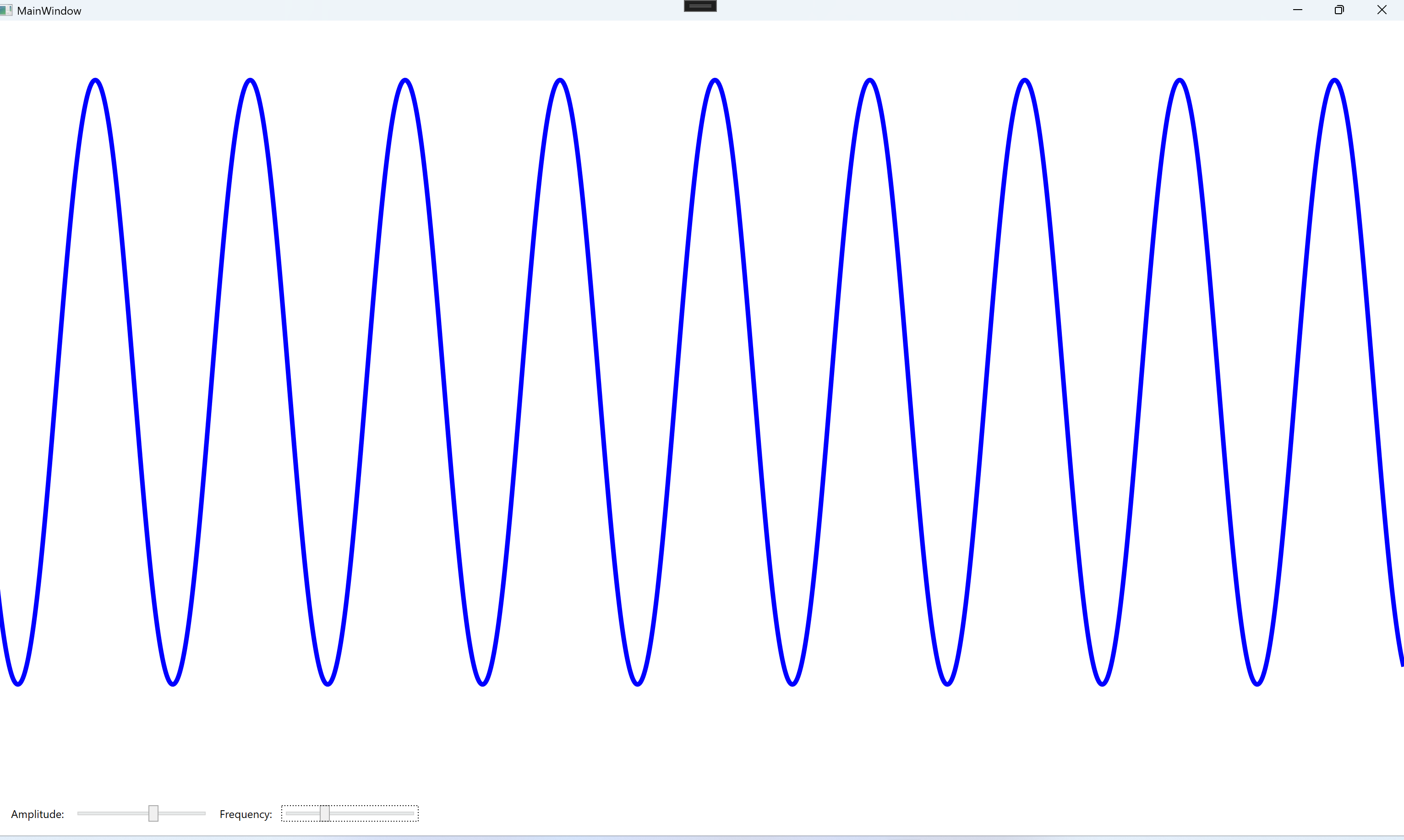//xaml
<Window x:Class="WpfApp231.MainWindow"
xmlns="http://schemas.microsoft.com/winfx/2006/xaml/presentation"
xmlns:x="http://schemas.microsoft.com/winfx/2006/xaml"
xmlns:d="http://schemas.microsoft.com/expression/blend/2008"
xmlns:mc="http://schemas.openxmlformats.org/markup-compatibility/2006"
xmlns:local="clr-namespace:WpfApp231"
mc:Ignorable="d"
WindowState="Maximized"
Title="MainWindow" Height="450" Width="800">
<Grid>
<Grid.RowDefinitions>
<RowDefinition />
<RowDefinition Height="100"/>
</Grid.RowDefinitions>
<Canvas Grid.Row="0"
Name="sinCanvas"
Background="White"
VerticalAlignment="Center"
Height="700"/>
<StackPanel Grid.Row="1" Orientation="Horizontal" VerticalAlignment="Bottom" Margin="10">
<TextBlock Text="Amplitude:" VerticalAlignment="Center" Margin="5"/>
<Slider Name="AmplitudeSlider" Minimum="10" Maximum="550" Value="150" Width="150" Margin="5"/>
<TextBlock Text="Frequency:" VerticalAlignment="Center" Margin="5"/>
<Slider Name="FrequencySlider" Minimum="0.01" Maximum="0.1" Value="0.02" Width="150" Margin="5"/>
</StackPanel>
</Grid>
</Window>
//cs
using System.Text;
using System.Windows;
using System.Windows.Controls;
using System.Windows.Data;
using System.Windows.Documents;
using System.Windows.Input;
using System.Windows.Media;
using System.Windows.Media.Imaging;
using System.Windows.Navigation;
using System.Windows.Shapes;
using System.Windows.Threading;
namespace WpfApp231
{
/// <summary>
/// Interaction logic for MainWindow.xaml
/// </summary>
public partial class MainWindow : Window
{
private DispatcherTimer timer;
private double phase = 0;
public MainWindow()
{
InitializeComponent();
// Start animation timer
timer = new DispatcherTimer();
timer.Interval = TimeSpan.FromMilliseconds(16); // ~60 FPS
timer.Tick += Timer_Tick;
timer.Start();
AmplitudeSlider.ValueChanged += (s, e) => Redraw();
FrequencySlider.ValueChanged += (s, e) => Redraw();
}
private void Timer_Tick(object sender, EventArgs e)
{
phase += 0.1;
Redraw();
}
private void Redraw()
{
sinCanvas.Children.Clear();
double width = sinCanvas.ActualWidth;
double height = sinCanvas.ActualHeight;
if (width == 0 || height == 0)
{
return;
}
double amplitude = AmplitudeSlider.Value;
double frequency = FrequencySlider.Value;
Polyline sinePolyline = new Polyline
{
Stroke = Brushes.Blue,
StrokeThickness = 5
};
for (int x = 0; x < width; x++)
{
double y = height / 2 - amplitude * Math.Sin(frequency * x + phase);
sinePolyline.Points.Add(new Point(x, y));
}
sinCanvas.Children.Add(sinePolyline);
}
}
}
![]()
![]()
![]()
![]()







 浙公网安备 33010602011771号
浙公网安备 33010602011771号